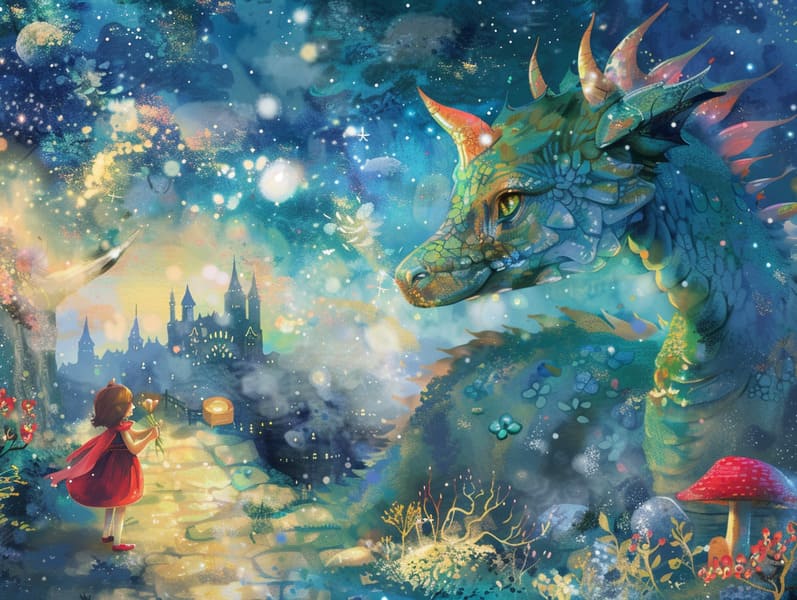
Famous fairy tales have legendary status. These stories have been spoken from one generation to the next ages before they were ever documented. They emerged from a variety of traditions, including American traditions. They were initially narrated among mature audiences, often carrying themes and messages reflective of the societal norms and beliefs of the time.
The famous Grimm duo, Jacob and Wilhelm (the Grimm brothers), were among the first to compile and release many of these beloved tales. Their compilation, "Grimm's Fables," included narratives like "Ashenputtel," "The Bread Crumb Trail," and "Little Snow White," which have since become mainstays in the world of iconic fairy tales. Similarly, Hans Christian Andersen's charming stories, such as "The Little Mermaid," and "The Ugly Duckling," have captivated hearts worldwide, guaranteeing their place in the pantheon of beloved fairy tales.
Though they are old, traditional fairy tales remain as important as ever, especially as children's bedtime stories. These magical stories are now available in multiple formats, including colorful picture books, magical animations, and digital fairy tales.
Their lasting appeal can be connected to several magical reasons:
Ethical Lessons: Classic fairy tales often impart important moral lessons. Tales like "The Wolf and the Liar" teach the benefit of truthfulness, while "The Tale of the Tortoise and the Hare" demonstrate the virtues of determination and unpretentiousness. These stories offer young ones clear distinctions between good and bad, shaping their moral compass in a tender yet lasting way.
Empathy and Understanding: Timeless fairy tales frequently present personalities facing challenges and struggles, urging audiences to identify with their struggles and encourage their triumphs. For instance, "Beauty and Her Beast" shows us the virtue of appreciating inner worth to appreciate the real person of a person, advancing perception and discernment.
Cultural Recognition: Many fairy tales are infused with the cultural contexts from which they developed. Delving into these tales can provide captivating looks into different cultures, encouraging a sense of world insight and acknowledgment.
Creativity and Fantasy: The magical elements in classic fairy tales—enchanted lands—revitalize children’s fantasy worlds. These fairy tales move readers to supernatural these guys realms, boosting imaginative ideas and a sense of astonishment that endures a lifetime.
Traditional fairy tales are not only captivating but also teaching. They act as bewitching tools in advancing various mind and heart abilities in the young. When traditional fairy tales are recited, they foster verbal development by bringing new lexicon and intricate sentence structures. This practice also cultivates auditory perception and mental focus, as young ones concentrate deeply, prepared to see what happens next.
Furthermore, examining the themes and characters of timeless fairy tales can improve thought processes and logical thinking. Young ones are instructed to discover patterns, expect results, and make sense of cause and effect. These deliberations also help little ones utter their thoughts and feelings, boosting their emotional intelligence.
In today’s technological era, the abundance of web-based fairy tales has made these tales more acquirable than ever. Web platforms and web apps present comprehensive collections of classic fairy tales that can be explored or listened to anytime, anywhere. Fairy tales recited are particularly popular, offering an entertaining method for kids to engage with these charming tales. Audio stories and spoken videos carry characters and settings to life, often joined by entrancing musical scores and songs that intensify the tale journey.
The timeless allure of traditional fairy tales lies in their ability to transform to new eras while sustaining their central messages. Contemporary retellings of these narratives often highlight more representative protagonists and modern settings, making them meaningful to today’s audience. However, the underlying themes of boldness, humanity, and justness remain unchanged, continuing to strike a chord with audiences of all ages.
Classic fairy tales also offer a sense of ease and knownness. They put forth a well-structured narrative with a straightforward beginning, middle, and end, often coming to a close with the finalization of conflicts and the triumph of goodness over badness. This uniformity can be placating for kids, giving a sense of constancy in an unpredictable world.
Ancient fairy tales continue to spellbind and enlighten new generations, maintaining their magic and impact in modern society. As kids' bedtime tales, they bring a perfect blend of magic and knowledge, backing moral values, empathy, and creativity. The availability of digital fairy tales and the likability of fairy tales spoken ratify that these timeless stories remain attainable to new generations.
By defending and sharing these fairy tales, we continue to exalt the rich tapestry of cultural legacy and cultural heritage. Whether you are perusing a vividly illustrated book, accessing a internet library, or listening via an spoken story, the appeal of famous fairy tales is always within reach. These tales convey of the endless magic of narratives and its ability to tie us across centuries and lands.
If you are reading a beautifully illustrated book, delving into a online collection, or listening to an read-aloud story, the allure of classic fairy tales is always within reach.
These narratives show us of the endless magic of narratives and its ability to link us across centuries and lands, casting a charm that enchants and educates alike.